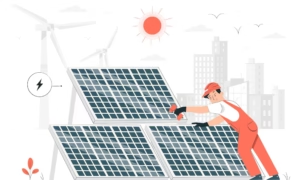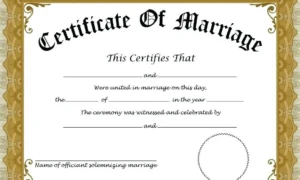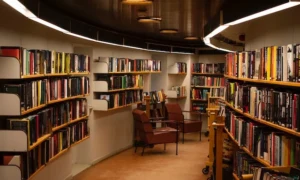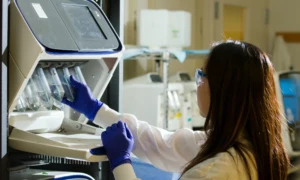
In an era marked by environmental concerns and a growing sense of responsibility towards our planet, the concept of a Circular Economy has gained significant traction. Imagine a world where waste is minimized, resources are utilized efficiently, and sustainability is not just a buzzword but a way of life. Now, picture the power of Blockchain technology seamlessly integrating with this vision, providing the tools needed to transition towards a Circular Economy. In this post, we’ll explore the intersection of blockchain and sustainability, understanding how this dynamic duo can pave the way for a greener, more sustainable future.
Understanding the Circular Economy
Before we delve into the role of blockchain, let’s grasp the fundamentals of a Circular Economy. Unlike the traditional linear model of “take, make, dispose,” a Circular Economy is designed to minimize waste and make the most out of resources. It revolves around the principles of recycling, reusing, and reducing, creating a closed-loop system where products and materials have an extended life cycle. This shift requires a collaborative effort from businesses, consumers, and technology, and this is where blockchain steps in.
Blockchain’s Role in the Circular Economy
Blockchain, the decentralized and transparent ledger technology that underlies cryptocurrencies like Bitcoin, has the potential to transform the way we approach sustainability. Here’s how:
Traceability and Transparency
Blockchain enables end-to-end traceability by recording every transaction in a secure and unchangeable manner. In the context of a Circular Economy, this means we can track the entire life cycle of a product—from raw materials to manufacturing, distribution, use, and eventual recycling or disposal. Consumers can make informed choices, and businesses can ensure the authenticity of their sustainability claims.
Supply Chain Optimization
By integrating blockchain into supply chain management, companies can optimize processes, reduce inefficiencies, and minimize waste. Smart contracts, self-executing contracts with the terms of the agreement directly written into code, can automate and streamline transactions, ensuring that products are sourced responsibly and move seamlessly through the supply chain.
Tokenization for Incentives
Blockchain’s ability to tokenize assets allows for the creation of incentives for sustainable practices. Imagine a scenario where consumers are rewarded with tokens for recycling or choosing eco-friendly products. These tokens can be exchanged for discounts, creating a circular economy ecosystem where sustainability is not just a moral choice but an economically advantageous one.
Reducing Counterfeiting
Counterfeiting is a significant issue in many industries, leading to economic losses and environmental harm. Blockchain’s secure and transparent nature helps in verifying the authenticity of products. This is crucial in a Circular Economy where the origin and quality of recycled materials play a pivotal role.
Decentralized Marketplaces
Blockchain facilitates the creation of decentralized marketplaces for buying, selling, and exchanging used goods. This encourages the reuse of products, extending their lifespan and reducing the demand for new resources. Smart contracts can automate transactions, ensuring a secure and transparent exchange process.
Blockchain and Renewable Energy
One significant aspect of transitioning to a Circular Economy is the integration of renewable energy sources. Blockchain can play a pivotal role in ensuring the efficiency and transparency of renewable energy transactions. Through blockchain, consumers can track the source of their energy, verifying that it comes from renewable sources. This not only promotes the use of clean energy but also encourages the growth of renewable energy industries. Smart contracts can automate energy transactions, making it easier for individuals and businesses to participate in and contribute to the renewable energy revolution.
Community Engagement and Education
Education and community engagement are essential components of any sustainable transition. Blockchain can be leveraged to create platforms that educate consumers about the environmental impact of their choices. Imagine an app that allows users to scan product barcodes, revealing detailed information about the product’s life cycle, carbon footprint, and recyclability. By making this information easily accessible, blockchain empowers consumers to make informed decisions, fostering a sense of responsibility and accountability.
Collaborative Initiatives and Blockchain Consortia
The journey towards a Circular Economy requires collaboration on a global scale. Blockchain consortia, collaborative groups of organizations working together to achieve common goals, can be formed to standardize practices and protocols across industries. This ensures interoperability and consistency in implementing blockchain solutions for sustainability. Governments, businesses, and non-profit organizations can join forces to create a unified approach, leveraging blockchain’s capabilities for a more effective and widespread impact.
Challenges and Future Outlook
While the potential benefits are immense, transitioning to a Circular Economy using blockchain is not without challenges. Adoption requires collaboration between industries, regulatory frameworks, and technological advancements. Overcoming these hurdles will require a concerted effort from governments, businesses, and consumers.
Overcoming Regulatory Challenges
As with any transformative technology, regulatory challenges are inevitable. Governments play a crucial role in creating a supportive regulatory framework that encourages the adoption of blockchain for sustainable practices. The establishment of clear guidelines, standards, and incentives can facilitate the integration of blockchain solutions in various industries. Policymakers and industry leaders must work hand-in-hand to address legal and regulatory obstacles, fostering an environment where innovation in the Circular Economy can thrive.
In conclusion, the marriage of blockchain technology and the Circular Economy represents a powerful alliance in our pursuit of sustainability. As we navigate this exciting intersection, the key lies in fostering collaboration, embracing innovation, and recognizing that each small step towards a Circular Economy is a giant leap towards a greener, more sustainable future.








































